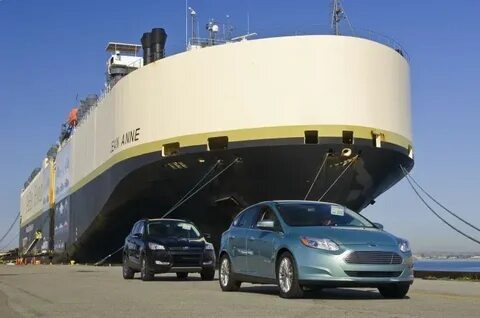The thought of car shipping can feel overwhelming. Whether you’re relocating for a new job, purchasing a vehicle from another state, or heading south for the winter, the process of moving your car can seem like a complex puzzle. But with the right knowledge, car shipping can be a smooth, secure, and straightforward experience. This definitive guide will navigate you through everything you need to know to transport your vehicle with confidence.
Why Choose Professional Car Shipping?
People turn to professional car shipping services for a multitude of smart and practical reasons. It’s often about more than just convenience; it’s about practicality and protection.
-
Long-Distance Moves: Driving a car across multiple states is time-consuming, adds significant wear and tear, and incurs hidden costs for fuel, hotels, and meals.
-
Online Vehicle Purchases: The digital marketplace has no borders, allowing you to find the perfect car anywhere. Car shipping bridges the gap between you and your new purchase.
-
Seasonal Migration: “Snowbirds” and seasonal travelers efficiently ship a vehicle to their winter or summer home, avoiding long, tedious drives.
-
Military Deployment: Service members frequently receive orders for relocation and need a reliable, hands-off way to move their personal vehicle.
-
Preserving Valuable Vehicles: For classic, exotic, or high-end luxury cars, professional transport is essential to minimize risk and preserve their condition and value.
Open vs. Enclosed Transport: Choosing Your Ride’s Journey
The first major decision you’ll face is the type of carrier. Understanding the difference is key to making the right choice for your vehicle.
Open-Air Transport
This is the most common and economical method. Your vehicle is transported on a multi-level trailer alongside other cars, fully exposed to the elements, just like the new cars you see on dealer lots.
-
Best For: Standard, everyday vehicles that are in good running condition.
-
Pros: Highly available, cost-effective, and efficient for most needs.
-
Cons: Vehicles are exposed to weather, road dust, and minor debris.
Enclosed Transport
Think of this as a high-security vault on wheels. Your car is placed inside a fully covered trailer, shielding it from all external conditions.
-
Best For: Classic cars, exotic sports cars, high-value restoration projects, or any vehicle where maximum protection is a priority.
-
Pros: Superior protection from weather, sun, road debris, and theft.
-
Cons: Higher cost and potentially longer booking times due to limited availability.
The Car Shipping Process: A Step-by-Step Roadmap
Knowing what to expect from start to finish makes the entire process feel manageable.
-
Get a Quote: Provide basic details about your vehicle (year, make, model, condition) and the pickup and delivery locations.
-
Book Your Shipment: Once you’ve selected a provider, you’ll formally book your shipment and schedule a pickup window.
-
Vehicle Preparation: Thoroughly clean your car (inside and out) to document its condition. Remove all personal belongings and ensure the fuel tank is only about a quarter full.
-
The Pickup: A driver will contact you to coordinate the pickup. You’ll meet to conduct a thorough inspection and note any existing damage on the Bill of Lading (BOL)—a crucial document.
-
In Transit: You will receive updates on your vehicle’s status. Modern services often provide tracking information so you can follow the journey.
-
The Delivery: Upon arrival, you’ll perform a final inspection against the BOL notes. Once satisfied, you sign to accept delivery and complete the transaction.
Key Factors That Influence Your Car Shipping Experience
Several variables can influence the smoothness and specifics of your shipment.
-
Vehicle Operability: Running vehicles are simple to load. Non-running (“non-op”) vehicles require special equipment and may affect the process.
-
Time of Year: Demand peaks in the summer and during winter “snowbird” season, which can impact timing and availability.
-
Flexibility: Having flexible pickup and delivery dates can often lead to a smoother and more efficient experience.
-
Route Popularity: Shipping between major metropolitan hubs is typically more straightforward than shipping to or from remote locations.
5 Pro Tips for a Seamless Car Shipping Experience
-
Plan Ahead: Don’t wait until the last minute. Booking several weeks in advance, especially during peak seasons, ensures better availability.
-
Research Thoroughly: Look beyond the price. Read customer reviews and verify credentials to ensure you’re working with a reputable service.
-
Document Everything: Before the driver arrives, take timestamped photos and videos of your car from every angle. This is your unbiased record of its pre-shipping condition.
-
Empty Your Vehicle: Do not pack personal items. They are not covered by insurance and can be a security risk. Your vehicle should be empty except for its factory-installed equipment.
-
Understand the Insurance: Confirm the carrier’s cargo insurance coverage. It’s also wise to check with your own auto insurance provider to understand your policy’s coverage during transport.
Final Destination: Arriving with Peace of Mind
Opting for professional car shipping is a strategic decision that saves you time, reduces stress, and safeguards your vehicle from a long and arduous drive. By understanding the types of transport, the process involved, and the factors that affect your shipment, you can navigate this journey with confidence. With the right preparation, your vehicle will arrive safely and ready for the road ahead.
FAQs: Your Car Shipping Questions, Answered!
Q1: How long does it take to ship a car across the country?
A: For a coast-to-coast trip, you can typically expect a transit time of 7 to 10 days. Shorter distances take less time, but always factor in a few days for scheduling and loading.
Q2: Is my car insured during transport?
A: Reputable carriers are required to have cargo insurance. The key is the initial inspection on the Bill of Lading (BOL). Any new damage upon delivery must be noted on the BOL before you sign it. This documentation is essential for filing a claim.
Q3: Can I pack my personal belongings in the car?
A: Absolutely not. This is a critical rule. Carrier insurance does not cover personal items, and they pose a safety and security risk. Your vehicle must be completely empty.
Q4: What does “non-operational” mean, and can I still ship my car?
A: “Non-operational” means the car cannot drive on its own power due to mechanical issues, a dead battery, or flat tires. Yes, you can still ship it, but you must declare it upfront, as it requires special equipment for loading.
Q5: Who is actually driving my car?
A: Your car is in the hands of a professional, licensed driver. Importantly, it is only driven minimally—on and off the transport trailer. The long-distance journey is spent securely fastened on the carrier, saving wear and tear on your odometer.





